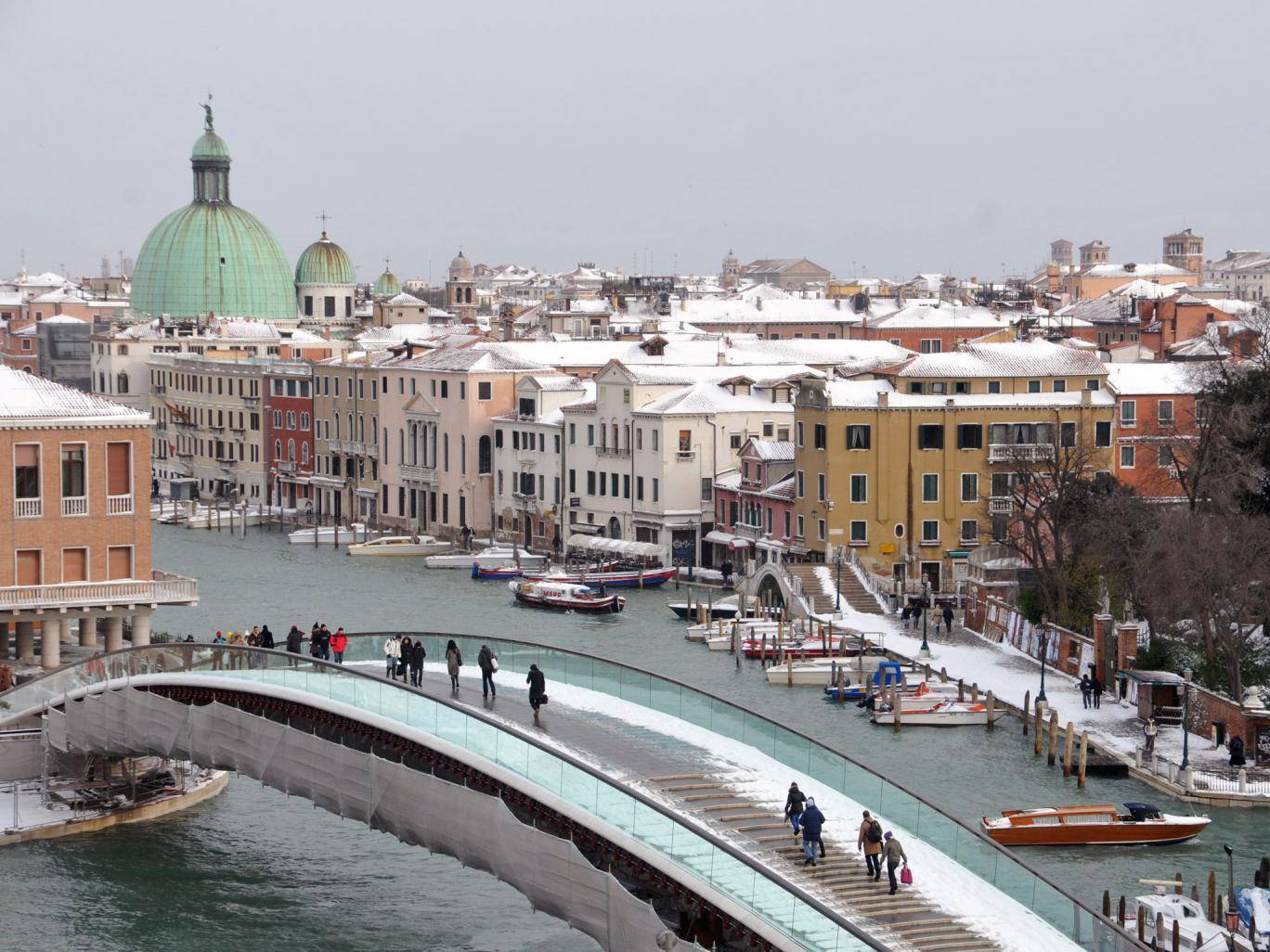Reading about Venice’s new Ponte della Constituzione I was reminded—again—of the dangers of architectural experimentation. The bridge, designed by Santiago Calatrava, is full of novelty: irregular steps, illuminated glass treads, and a beautiful but very flat arch. All these innovations have created problems. The irregularly-dimensioned steps cause people to trip, steps make the bridge inaccessible to wheelchairs (a strange-looking mechanical pod has been added), and the flat arch has created structural stresses on the foundations. As for the glass treads—they become slippery when wet, and the glass gets chipped by tourists wheeling their luggage, requiring expensive replacement. To make matters worse, the bridge cost three or four times more than estimated—a Calatrava trademark. No wonder the city of Venice is suing the architect. But the greater wonder is that clients still commission “ground-breaking” and “unprecedented” designs. Surely they would have learned their lesson by now? Beware of architects bearing shiny new gifts, whether in terms of untested materials, new technologies, or unusual solutions. There is a reason that architecture is—or at least traditionally was—the most conservative of the arts. Buildings last a long time—hundreds of years—and old buildings are the best evidence of what passes the test of time. Palladio was a revolutionary architect in terms of his revival of ancient Roman motifs, but he stuck to tried and true Veneto building solutions: brick construction, timber roof framing, clay-tiled roofs. That’s why his buildings, several of which grace Venice, have lasted so long. Traditional building is not about nostalgia or sentimentality as its critics would have it, but rather about imitating what works.


“Star-architects” produce amusing novelties when persons or organizations are daffy enough to finance their construction. But, as you have nicely pointed out, sometimes “Star-architects” really are not down-to-earth either in conceptualization or structural embodiment. Bricks are becoming ever more affordable particularly now that automated or drone robots can utilize bricks that are larger than those the human hand can most easily cope with. Why not more glass-brick in Venice. And, why not a Christo-like inflatable bridge that might be removed, re-scaled or changed in color? So little expense compared the the impractical displays of “Star-architects” the public seems to adore but which tax/rate payers and some politicians abhor.